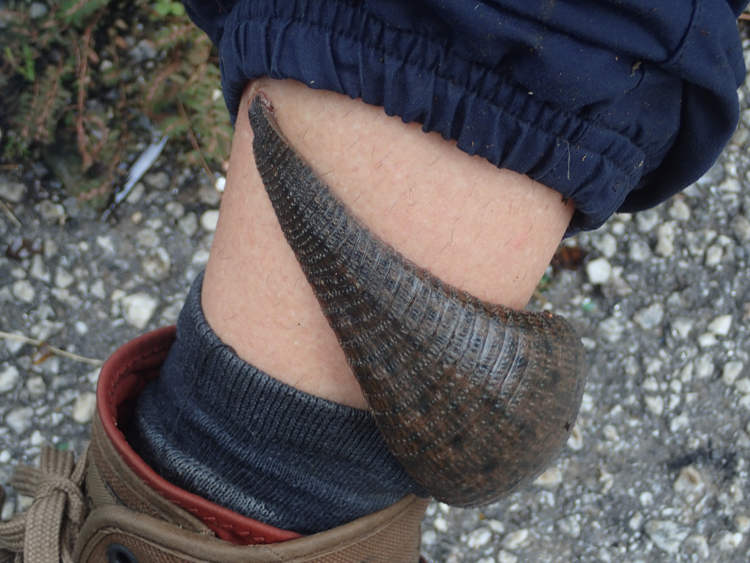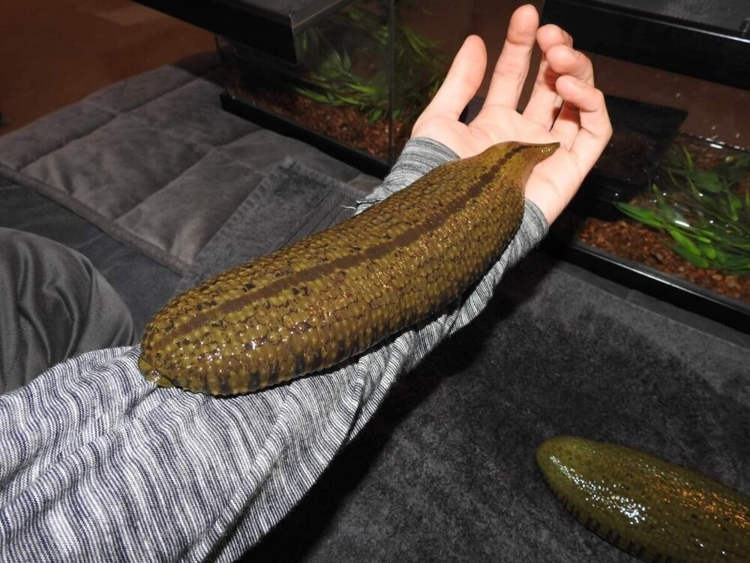Haementeria ghilianii or the Amazonian Giant Leech is the world’s largest leech by quite a significant margin, growing up to 18 inches (46 cm) long.
Leeches are found in wet and humid areas all over the globe, and while most are smaller than the average person’s index finger, a few can grow a lot longer than that. But one particular species of leech can get so big that it is considered the stuff of nightmares. Haementeria ghilianii, also known as the Amazonian Giant Leech, is an elusive leech that can only be found in French Guyana and certain nearby areas in Brazil, so you’re unlikely to run into one unless you live there, but photos of this slimy critter should be enough to send shivers down your spine. While most specimens measure between 30 and 35 centimeters, exceptional specimens can grow up to 46 cm long.

Photo: Anonyme973/Wikimedia Commons
First discovered by Italian naturalist Vittore Ghiliani in 1849, the Amazonian Giant Leech has achieved near-mythical status, mainly due to its unusual size. Stories and legends about several of these parasites sucking the blood of an adult human in mere hours, although there is no scientific data to back this up. Claims dating back to 1899 state that several leeches could kill horses and cattle by draining their blood. From what little information we could find online, the giant leech sucks blood at a rate of 04 to 15 milliliters per minute.
Unlike jawed leeches that have a row of teeth to puncture the host’s skin with, the Amazonian Giant Leech uses a proboscis – a sharp, needle-like appendage that extends from its mouth – to pierce the skin of its victims. This 10-centimeter proboscis extends quite deep under the skin, but you’re unlikely to feel it, because of a cocktail of chemicals secreted by the leech to numb the area it pierces. The leech’s saliva also contains a strong anticoagulant that keeps the flood flowing long after it has been detached from its host.

Haementeria ghilianii can survive for months at a time without feeding, waiting patiently for unsuspecting victims to pass by. During their slimming period, they seem rather small, but their body weight increases by 3 to 6 times per feeding, so when left to freely gorge on blood, they can become truly gigantic.
Featuring strong longitudinal muscles, the Amazonian giant leech is a lot sturdier than it looks. According to Mark Siddall of the American Museum of Natural History, you could probably step on one with a boot and not kill it. So you’re going to have to find another way to make sure it’s dead if you ever run into one of these monstrosities.

For more larger-than-life creatures, check out our posts on the giant Flemish rabbit, the world’s largest chicken, and Tommy, the world’s largest steer.












